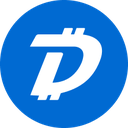-
 Bitcoin
Bitcoin $83,055.9927
-0.47% -
 Ethereum
Ethereum $1,811.3411
-0.84% -
 Tether USDt
Tether USDt $0.9996
-0.02% -
 XRP
XRP $2.0568
-0.29% -
 BNB
BNB $592.3786
-1.07% -
 USDC
USDC $1.0000
0.02% -
 Solana
Solana $115.8401
-3.10% -
 Dogecoin
Dogecoin $0.1622
-2.36% -
 Cardano
Cardano $0.6499
-0.49% -
 TRON
TRON $0.2387
1.14% -
 Toncoin
Toncoin $3.5313
-7.91% -
 UNUS SED LEO
UNUS SED LEO $9.4387
0.79% -
 Chainlink
Chainlink $12.8160
-2.83% -
 Stellar
Stellar $0.2597
-0.92% -
 Avalanche
Avalanche $18.1550
-1.86% -
 Sui
Sui $2.2297
-6.00% -
 Shiba Inu
Shiba Inu $0.0...01216
-1.10% -
 Hedera
Hedera $0.1628
-0.73% -
 Litecoin
Litecoin $83.3180
0.23% -
 Polkadot
Polkadot $4.0186
-0.86% -
 MANTRA
MANTRA $6.3865
0.69% -
 Bitcoin Cash
Bitcoin Cash $302.0680
0.90% -
 Bitget Token
Bitget Token $4.5033
-1.06% -
 Dai
Dai $1.0000
0.01% -
 Ethena USDe
Ethena USDe $0.9995
-0.05% -
 Hyperliquid
Hyperliquid $11.9355
-4.35% -
 Monero
Monero $213.8810
-0.87% -
 Pi
Pi $0.5489
-17.54% -
 Uniswap
Uniswap $5.8524
-1.97% -
 Aptos
Aptos $5.0205
-3.57%
What is the difference between NFT and ordinary pictures?
NFTs are unique digital assets on blockchains like Ethereum, offering verifiable ownership and authenticity, unlike ordinary pictures which can be easily copied and lack proof of origin.
Apr 03, 2025 at 02:07 pm
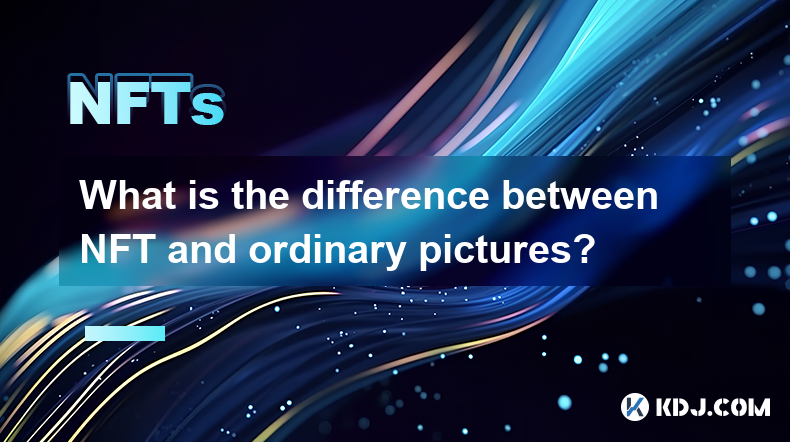
The world of cryptocurrency has seen a significant rise in the popularity of Non-Fungible Tokens (NFTs), which often leads to confusion about what sets them apart from ordinary pictures. In this article, we will delve into the key differences between NFTs and regular images, exploring their unique features, applications, and implications within the cryptocurrency ecosystem.
What are NFTs?
Non-Fungible Tokens, or NFTs, are unique digital assets stored on a blockchain, most commonly Ethereum. Unlike cryptocurrencies such as Bitcoin or Ethereum, which are fungible and can be exchanged on a one-to-one basis, NFTs are indivisible and cannot be exchanged on an equal footing. Each NFT has distinct information or attributes that make it unique, similar to a digital certificate of authenticity.
NFTs can represent ownership of digital art, collectibles, music, virtual real estate, and even tweets. The uniqueness and ownership of NFTs are verified and secured by the blockchain, ensuring that they cannot be replicated or tampered with. This feature makes NFTs particularly valuable in the world of digital art and collectibles, where proving ownership and authenticity is crucial.
What are Ordinary Pictures?
Ordinary pictures, on the other hand, are digital images that can be easily copied, shared, and modified without any inherent proof of ownership or authenticity. These images are typically stored on centralized servers or personal devices and can be freely distributed across the internet. Unlike NFTs, ordinary pictures do not have any unique identifiers or blockchain records to verify their origin or ownership.
Key Differences Between NFTs and Ordinary Pictures
Uniqueness and Authenticity: NFTs are unique digital assets with verifiable ownership and authenticity, thanks to the blockchain technology that underpins them. Ordinary pictures, however, can be duplicated and modified without any record of their origin or ownership.
Ownership and Provenance: With NFTs, ownership is recorded on the blockchain, providing a clear and transparent history of the asset's provenance. Ordinary pictures lack this feature, making it difficult to prove ownership or trace the history of an image.
Value and Scarcity: NFTs can be scarce and have intrinsic value due to their uniqueness and the demand for specific digital assets. Ordinary pictures, on the other hand, can be easily replicated, reducing their scarcity and potential value.
Interoperability: NFTs can be traded and used across different platforms and applications within the blockchain ecosystem, while ordinary pictures are typically confined to the platforms or devices on which they are stored.
Smart Contracts: NFTs often come with smart contracts that can automate royalties, licensing agreements, and other terms of use. Ordinary pictures do not have this functionality, making it more challenging to manage and monetize digital content.
Applications of NFTs
NFTs have a wide range of applications within the cryptocurrency circle, including:
Digital Art and Collectibles: Artists and collectors can tokenize their work as NFTs, allowing them to sell and trade digital art with verifiable ownership and authenticity. This has led to a boom in the market for digital art, with high-profile sales and auctions driving interest and investment.
Gaming and Virtual Worlds: NFTs are used to represent in-game items, virtual real estate, and other digital assets within blockchain-based games and virtual worlds. Players can buy, sell, and trade these assets, creating new economic opportunities and enhancing the gaming experience.
Music and Entertainment: Musicians and entertainers can tokenize their work as NFTs, allowing fans to purchase exclusive content, experiences, and memorabilia. This opens up new revenue streams and strengthens the connection between artists and their audience.
Sports and Memorabilia: Sports organizations and athletes can use NFTs to create and sell digital collectibles, such as trading cards, highlights, and memorabilia. This allows fans to own and trade unique digital assets related to their favorite teams and athletes.
Implications of NFTs in the Cryptocurrency Circle
The rise of NFTs has significant implications for the cryptocurrency ecosystem, including:
Increased Adoption: The popularity of NFTs has brought new users and investors into the cryptocurrency space, driving increased adoption and awareness of blockchain technology.
New Revenue Streams: NFTs provide artists, creators, and businesses with new ways to monetize their digital content and assets, creating new revenue streams and economic opportunities.
Challenges and Risks: The NFT market has also faced challenges and risks, including high transaction fees, environmental concerns related to blockchain energy consumption, and the potential for fraud and scams. These issues highlight the need for continued innovation and regulation within the NFT space.
Cultural and Social Impact: NFTs have sparked discussions about the value of digital art, the role of technology in creativity, and the future of ownership and intellectual property. These conversations reflect broader cultural and social shifts driven by the rise of cryptocurrencies and blockchain technology.
Technical Aspects of NFTs
Understanding the technical aspects of NFTs can help clarify their differences from ordinary pictures:
Blockchain Technology: NFTs are built on blockchain technology, which provides a decentralized and secure way to record and verify ownership. The most common blockchain for NFTs is Ethereum, but other blockchains like Binance Smart Chain and Flow are also used.
Token Standards: NFTs follow specific token standards, such as ERC-721 and ERC-1155 on the Ethereum blockchain. These standards define the rules and functions for creating, managing, and trading NFTs.
Metadata: Each NFT contains metadata that describes its unique characteristics, such as the creator, title, and any associated media files. This metadata is stored on the blockchain, ensuring that the NFT's information cannot be altered.
Minting Process: Creating an NFT, or "minting," involves uploading the digital asset to the blockchain and generating a unique token. This process requires paying a gas fee, which covers the computational cost of adding the NFT to the blockchain.
Wallets and Marketplaces: To buy, sell, and store NFTs, users need a compatible cryptocurrency wallet and access to NFT marketplaces. Popular wallets include MetaMask and Trust Wallet, while marketplaces like OpenSea and Rarible facilitate NFT transactions.
The Future of NFTs
The future of NFTs within the cryptocurrency circle is likely to be shaped by several factors:
Technological Advancements: Ongoing developments in blockchain technology, such as layer-2 solutions and more energy-efficient consensus mechanisms, could address current challenges and enhance the functionality of NFTs.
Regulatory Environment: The regulatory landscape for NFTs is still evolving, and future regulations could impact their use and adoption. Clear guidelines and protections could help legitimize and stabilize the NFT market.
Market Dynamics: The NFT market is highly dynamic, with trends and demand shifting rapidly. The sustainability of the market will depend on continued innovation, new use cases, and the ability to attract and retain users.
Cultural and Social Trends: As NFTs continue to influence art, entertainment, and other cultural sectors, their role and perception within society will evolve. This could lead to new opportunities and challenges for creators and investors.
Frequently Asked Questions
Q: What makes an NFT different from a regular picture?
A: An NFT is a unique digital asset stored on a blockchain, with verifiable ownership and authenticity. Regular pictures, on the other hand, are easily copied and lack any inherent proof of ownership or uniqueness.
Q: Can I turn any picture into an NFT?
A: Yes, you can turn any digital image into an NFT by minting it on a blockchain. However, the value and demand for the NFT will depend on factors such as the image's uniqueness, the creator's reputation, and the market's interest.
Q: How do I buy and sell NFTs?
A: To buy and sell NFTs, you need a compatible cryptocurrency wallet and access to an NFT marketplace. You can browse available NFTs on the marketplace, place bids, or purchase them directly using cryptocurrency. When selling, you can list your NFT for sale and set the terms, such as price and duration.
Q: What are the risks associated with NFTs?
A: Risks associated with NFTs include high transaction fees, environmental concerns related to blockchain energy consumption, and the potential for fraud and scams. It's important to research and understand these risks before engaging with NFTs.
Q: Can NFTs be used for purposes other than art and collectibles?
A: Yes, NFTs have a wide range of applications beyond art and collectibles. They can be used in gaming, virtual worlds, music, entertainment, sports, and other sectors where digital assets and ownership are valuable.
Q: How do NFTs impact the traditional art market?
A: NFTs have introduced a new dimension to the art market by enabling digital art to be tokenized and sold with verifiable ownership. This has led to increased interest and investment in digital art, challenging traditional notions of art ownership and value.
Disclaimer:info@kdj.com
The information provided is not trading advice. kdj.com does not assume any responsibility for any investments made based on the information provided in this article. Cryptocurrencies are highly volatile and it is highly recommended that you invest with caution after thorough research!
If you believe that the content used on this website infringes your copyright, please contact us immediately (info@kdj.com) and we will delete it promptly.
- Cango, a publicly traded Chinese conglomerate, has agreed to sell its legacy China operations to an entity associated with peer Bitmain
- 2025-04-04 09:35:11
- Neo Initiates an Investigation into Large-scale NEO Token Movements Preceding a Sharp Decline in Market Value
- 2025-04-04 09:35:11
- Bitcoin (BTC) Price Juggles Around $82,000 as the Global Market Dynamics Are Surrounded with Uncertainty
- 2025-04-04 09:30:12
- Move Over DOGE and PEPE, There's a New Meme Coin in the Market: InfluencerPepe
- 2025-04-04 09:30:12
- Solana (SOL) Drops by Nearly 12.75% in the Last 24 Hours to a Three-Week Low of $100
- 2025-04-04 09:25:12
- Florida Homeowners Will Have to Wait for Property Tax Relief
- 2025-04-04 09:25:12
Related knowledge
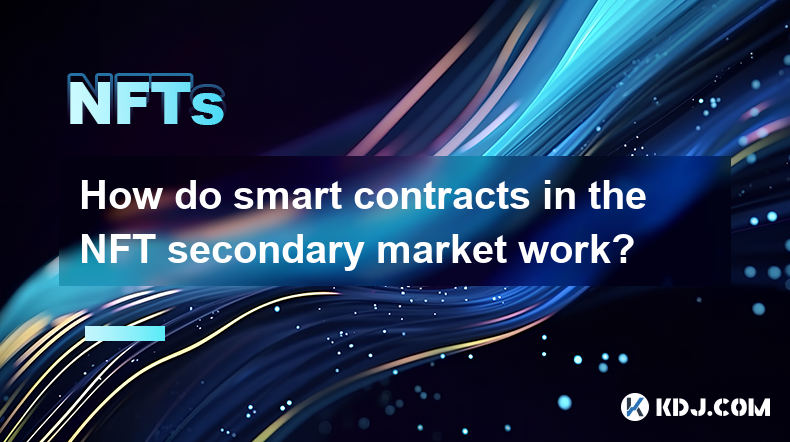
How do smart contracts in the NFT secondary market work?
Apr 03,2025 at 07:14am
Smart contracts play a pivotal role in the NFT secondary market, facilitating seamless transactions and enforcing predefined rules. These self-executing contracts with the terms of the agreement directly written into code are stored on the blockchain. In the context of NFTs, smart contracts automate the buying, selling, and transferring of digital asset...
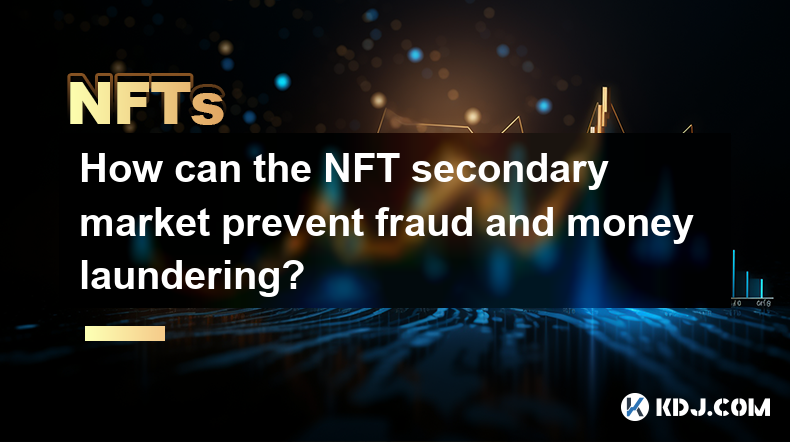
How can the NFT secondary market prevent fraud and money laundering?
Apr 03,2025 at 08:35am
The NFT secondary market has become a thriving hub for digital art and collectibles, but it also faces challenges in preventing fraud and money laundering. To tackle these issues, the market can implement various strategies and technologies to ensure a safer and more transparent trading environment. This article will explore how the NFT secondary market...

How are transaction fees in the NFT secondary market calculated?
Apr 04,2025 at 05:28am
The calculation of transaction fees in the NFT secondary market is a crucial aspect that both buyers and sellers need to understand. These fees can significantly impact the overall cost of transactions and the profits that sellers can make. In this article, we will delve into the various components that make up these fees, how they are calculated, and w...
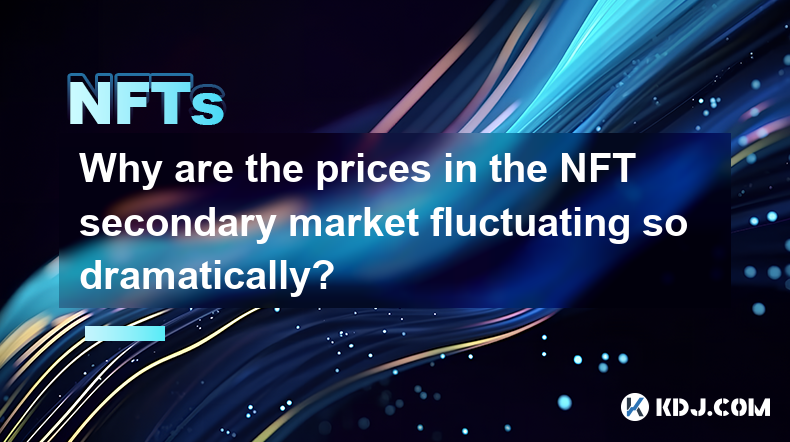
Why are the prices in the NFT secondary market fluctuating so dramatically?
Apr 03,2025 at 10:35pm
The NFT secondary market has been experiencing dramatic price fluctuations, leaving many in the cryptocurrency community puzzled and curious. To understand this phenomenon, it's essential to delve into the factors driving these price movements. From the impact of market sentiment and celebrity endorsements to the role of speculation and the unique natur...
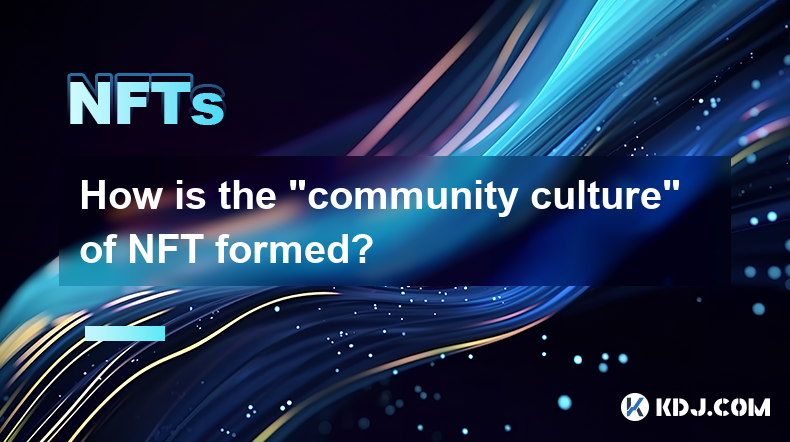
How is the “community culture” of NFT formed?
Apr 03,2025 at 11:07am
The formation of the 'community culture' within the NFT (Non-Fungible Token) space is a fascinating and multi-faceted process. It involves various elements such as shared interests, active engagement, and the creation of a sense of belonging among members. NFT communities often revolve around specific projects or artists, fostering a unique environment ...
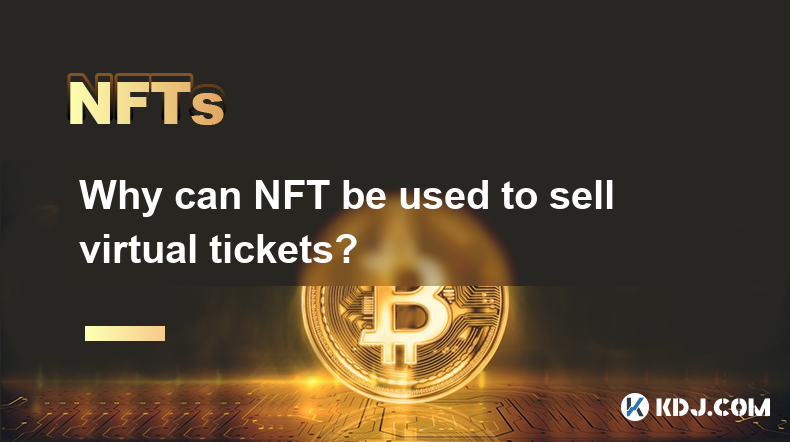
Why can NFT be used to sell virtual tickets?
Apr 03,2025 at 01:35pm
NFTs, or Non-Fungible Tokens, have revolutionized the way we think about digital ownership and value, particularly in the realm of virtual tickets. The primary reason NFTs can be used to sell virtual tickets is their unique nature. Unlike cryptocurrencies such as Bitcoin or Ethereum, which are fungible and can be exchanged on a one-to-one basis, NFTs ar...

How do smart contracts in the NFT secondary market work?
Apr 03,2025 at 07:14am
Smart contracts play a pivotal role in the NFT secondary market, facilitating seamless transactions and enforcing predefined rules. These self-executing contracts with the terms of the agreement directly written into code are stored on the blockchain. In the context of NFTs, smart contracts automate the buying, selling, and transferring of digital asset...

How can the NFT secondary market prevent fraud and money laundering?
Apr 03,2025 at 08:35am
The NFT secondary market has become a thriving hub for digital art and collectibles, but it also faces challenges in preventing fraud and money laundering. To tackle these issues, the market can implement various strategies and technologies to ensure a safer and more transparent trading environment. This article will explore how the NFT secondary market...

How are transaction fees in the NFT secondary market calculated?
Apr 04,2025 at 05:28am
The calculation of transaction fees in the NFT secondary market is a crucial aspect that both buyers and sellers need to understand. These fees can significantly impact the overall cost of transactions and the profits that sellers can make. In this article, we will delve into the various components that make up these fees, how they are calculated, and w...

Why are the prices in the NFT secondary market fluctuating so dramatically?
Apr 03,2025 at 10:35pm
The NFT secondary market has been experiencing dramatic price fluctuations, leaving many in the cryptocurrency community puzzled and curious. To understand this phenomenon, it's essential to delve into the factors driving these price movements. From the impact of market sentiment and celebrity endorsements to the role of speculation and the unique natur...

How is the “community culture” of NFT formed?
Apr 03,2025 at 11:07am
The formation of the 'community culture' within the NFT (Non-Fungible Token) space is a fascinating and multi-faceted process. It involves various elements such as shared interests, active engagement, and the creation of a sense of belonging among members. NFT communities often revolve around specific projects or artists, fostering a unique environment ...

Why can NFT be used to sell virtual tickets?
Apr 03,2025 at 01:35pm
NFTs, or Non-Fungible Tokens, have revolutionized the way we think about digital ownership and value, particularly in the realm of virtual tickets. The primary reason NFTs can be used to sell virtual tickets is their unique nature. Unlike cryptocurrencies such as Bitcoin or Ethereum, which are fungible and can be exchanged on a one-to-one basis, NFTs ar...
See all articles


















































































